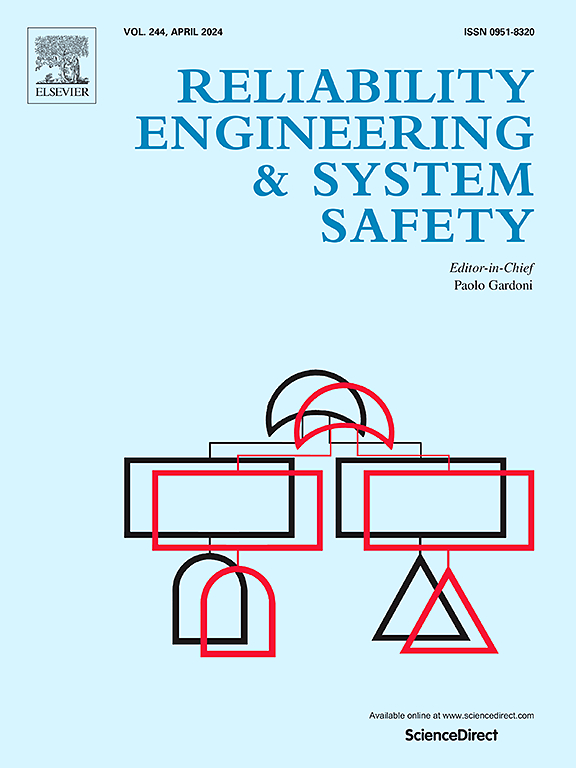Leveraging data mining for critical branch identification through simultaneity and causality correlation analysis under cascading failures in power systems
IF 9.4
1区 工程技术
Q1 ENGINEERING, INDUSTRIAL
引用次数: 0
Abstract
Identifying critical branches or propagation paths from cascading failure data can be an effective way to mitigate and even prevent cascading blackouts in power systems. Hence, this paper proposes a data mining-based identification framework to find critical correlations among propagating pathways. We define simultaneity correlation and causality correlation to comprehensively reveal the fault propagation features according to the temporal and synchronous dependence of critical branches during fault propagation. The itemset and sequence mining pattern is used to model the two types of correlations and then mine the critical correlations, respectively. To reduce the impacts of the incompleteness of initial conditions and improve the accuracy of mining, the Shannon diversity index is introduced to quantify the diversity of initial conditions. Moreover, we propose a recursion graph-based probability calculation model to fast predict the probability/risk of occurrence of the unknown correlations in cascading failures. Numerical simulation results based on the IEEE 118-bus system verify the effectiveness of the proposed method.
利用数据挖掘技术对电力系统级联故障下的关键支路进行同时性和因果关联分析
从级联故障数据中识别关键支路或传播路径是缓解甚至防止电力系统级联停电的有效方法。因此,本文提出了一个基于数据挖掘的识别框架来发现传播路径之间的关键相关性。根据故障传播过程中关键分支的时间依赖性和同步依赖性,定义同时性关联和因果性关联,全面揭示故障传播特征。项目集和序列挖掘模式用于对两种类型的相关性建模,然后分别挖掘关键相关性。为了减少初始条件不完备性的影响,提高挖掘精度,引入Shannon多样性指数对初始条件的多样性进行量化。此外,我们提出了一种基于递归图的概率计算模型,以快速预测级联故障中未知关联发生的概率/风险。基于IEEE 118总线系统的数值仿真结果验证了该方法的有效性。
本文章由计算机程序翻译,如有差异,请以英文原文为准。
求助全文
约1分钟内获得全文
求助全文
来源期刊

Reliability Engineering & System Safety
管理科学-工程:工业
CiteScore
15.20
自引率
39.50%
发文量
621
审稿时长
67 days
期刊介绍:
Elsevier publishes Reliability Engineering & System Safety in association with the European Safety and Reliability Association and the Safety Engineering and Risk Analysis Division. The international journal is devoted to developing and applying methods to enhance the safety and reliability of complex technological systems, like nuclear power plants, chemical plants, hazardous waste facilities, space systems, offshore and maritime systems, transportation systems, constructed infrastructure, and manufacturing plants. The journal normally publishes only articles that involve the analysis of substantive problems related to the reliability of complex systems or present techniques and/or theoretical results that have a discernable relationship to the solution of such problems. An important aim is to balance academic material and practical applications.
 求助内容:
求助内容: 应助结果提醒方式:
应助结果提醒方式:


